#also in the 3d viewer hold shift to control the light - it starts out a bit bright and overexposes the colors (ctrl+shift+scroll to adjust)
Explore tagged Tumblr posts
Text
:︋︆️︀︃︈︊︅︇️︁︌︊︆︆︌︈︂︈︂︊︊︃︅︌︈︉︄︁︇︅︍︀︋︋︍︌︅︊︂︀︃︄︄︃︇︇︀︀︊︉︂︂︋️︆︄︃︅️︂︆︎︅︀︃︅︍︈︇︎︃︉︍︉︂︈︈︍︅︄︈︊︀︊︍︂︃︍︄︍︊️︎︍︂︄︌︅︀︌️︀︎︆︍︌︋︀︀︃️︆️︉︍︀︊︀︅︍︀︈︋︇︊︍︎︋︊️︄︃︃︀︊︂︉︌︎︍︊︂︂︅︆︀︋︈︎︇︄︈︇︎︎︌︈︃︌︂︉︁︁︊︍︈︆︄︅︃︀︆︂︂︌︍︅︂︌︎︁︋︃︍︂︈︌︂︎︉︀︃️️︁︎︅︃︁️︆︌︂︌︂︍︎︃︂︈︁︊︅︁︆︍︇︄︈︉︍︂︃︄︇︆︆︉︄︌︄︉︁︃︇︀︊︋︂︍︎︄️️︈︌︋︊︀︆︇︀︍︀︋︄︇︈︃️︂︄︊︇︆︄︌���︁︍️️︀︅︊︋︈︃︍︃︈︂︋︊︃︌︂︌︅︎︆︈️︁︄︁︁︁︋️︄︍︌︍︆︉︂︁︍︇��︎︄️︈︂︍︁️︍︋︅︍︈︁︅︁︈︂︎︋︍︅︌︄︍︉︊︊︋︇︎︇️︂︂︍︀︄︋︋︁︂︆︊︍︉︃︌︀︃︇︇︈︍️︌︅︇︀︄︄︍︈︍︃︆︀︊︃️︉︆︃️︁︈︎︁︎︃︈︈︅︋️︉︇︈️︎︍︍︂︂︆︍︁︄︄︃︊︃︊︃︀︍︋︁︌︋︉︅︀︎️︃︈︀︂︌︅︌︀︊︅︆️︀︊︃︃︆️︌︃︂︈︄︉︉︇︁︅︀︋︇︊︅︁︈︄︂︃︅︌︋︊︃︎︄︁︄︅︀︍︂︂︈️︎︌︍︄︄︈︀︀︈︈︌︁︈️︇︂︎︃︌︆︂︋︌︁︊︁︌️︋︁︆︁︇︇︆︃︅︊︊︀️︁︎︎︅︇︅︆︎️︁︆︎︃︈︍︄︆︈︄︀︋︈︇︎︍︁︃︇︆︂︄︁︃︇︀︀︎︀︅︌︅️︀️︋︁︅︂︆︅️︍︌︉︈︀︆︇︍︎︂︌︂︂︂︊︄︂︃︋︀︆︅︅︃︅︎︍︃️︀︍︅︈︇︎︇︁︇︀︌︈︋️︅︎︊︂︁︊︍️︇︆︃︇︂︇︇︆︆︆︌︂︎︉︉️︅︈︃︂️︄︌︃︅︇︋︊︄︁︁︇︇︀︄︋︁︇︃︊︄︅︄︊︆︉︁︎︂︋︈︇︀︇︄︆︁︎︍︌︀︋︋︊︆️︉︁︄︅︉︆︂︇︂︍︌︇��︂︍︉️︋︂︋︁︁︎︇︂︇︅︎︃︇︍︂︍︉︉︆︄︎︃︅︀︊︂︁︁︇︆︎︆︅︇︂︁︅︉︋︇︁︅︍︉︄︎︊︇︅︈︊︀︁︌︂︂︁︃︇︍︎︋︁︅︆︊︅︄︀︃︁︎︅︄︋︈︋︇︋︃︎︉︉︍︎︎︂︍︇︅︎️︋︍︂︈︎︃︃︍️︂︉︄︄︍︄︆︃︊︂︃︀︋︀︇︇︆︀︀︇︄︆︅︋︁︊︍︂︋︀︍︄︀︁︌︂︍︋︉3

wait oh yeah. its done! now you can imagine this freak of nature in 3d space
#sdf tag placeholder#<- that tag means there's a hidden 3d model in this post that will be revealed if you look at it on my blog theme#not sure if i should tag it “fanyart” though since it's invisible on dashboard view#also in the 3d viewer hold shift to control the light - it starts out a bit bright and overexposes the colors (ctrl+shift+scroll to adjust)
4K notes
·
View notes
Text
Technology and Society - VR, AR, AND MR
In this blog I will be looking at answering the question: could new age technology such as AR, VR AND MR, possibly cause a shift in our society and culture? Looking at theories of technological determinism (TD), focusing on its assumptions about how a societies social structure and cultural values are determined by its technology advances. Also, looking at the work of Jean Baudrillard and his theory on hyperreality, and his 1981 book simulacra and simulation, also looking at how the new technologies listed above can let us transcend our perceived realty into anther that lets us live in a simulated world? I will be focusing on the AR game Pokémon Go as my case study, but I will also be making references to other games through the blog.
Technological Determinism (TD)
Technological determinism, a term first coined by ‘Thorstein Velben’ in 1920, is according to ‘Ferrante’ is a reductionist theory that presumes a society’s technology drives the development of it’s social and cultural values (Fung, 2017). This theory aims to provide a link between the nature of society and technology. It attempts to give an explanation as to whom or what could have a controlling power to cause a cultural change, by questioning to which degree human thought or action is influenced by technological factors. However, there are many different versions of the (TD), In the book, ‘Does technology drive History?’, the ideas of technological determinism takes many forms, Ranging from ‘hard’ and ‘soft’ extremes (1994). In his book, Autonomous Technology, Langdon Winner states, “changes in technology are the single most important basis of change in society” (1977), he argues the core assumptions of the theory is that technology forms the basis of social life. With the development of the virtual reality game technology; could it cause a major societal shift in the new age of technology unlike we’ve seen before?
Augmented reality (AR), Virtual reality (VR) and Mixed reality (MR)
Augmented reality adds digital elements to the person’s actual environment often by using the camera on a smartphone. Examples of this would be the use of filters on apps such as snapchat, Instagram, and the most popular, Pokémon Go.
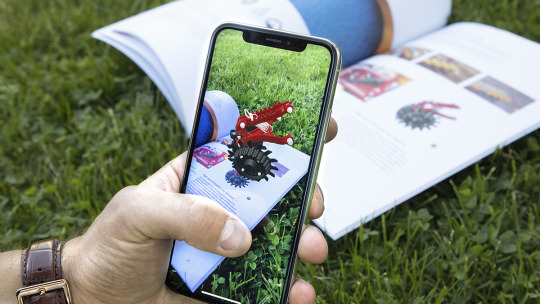
Image from https://www.vaderstad.com/ca-en/about-us/news/news-archive/2018/international/vaderstad-introduces-ar-to-the-farming-industry/
Virtual reality (VR) is a complete immersion experience that shuts out the physical world.
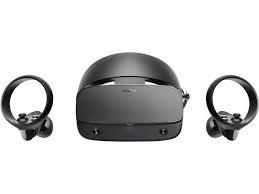
Image from http://www.technologyrecord.com/Article/microsoft-outlines-three-trends-that-will-impact-mixed-reality-in-2018-63570
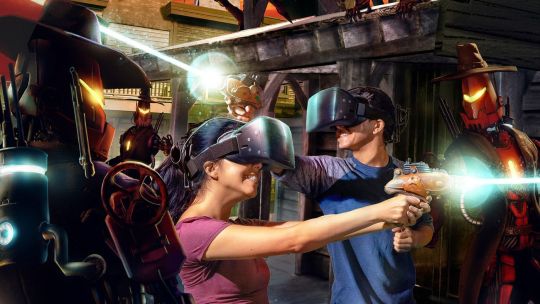
image from https://veer.tv/blog/best-vr-games-of-2018-top-15/
Mixed reality (MR) experience, combines elements of both AR and VR, real-world and digital objects interact. (The franklin institute, 2019)
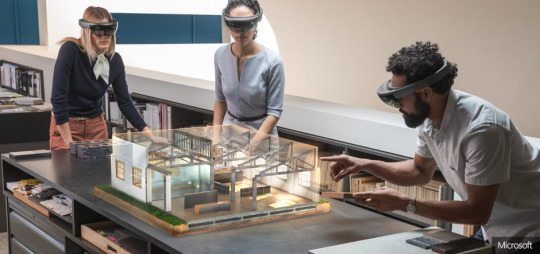
Image from http://www.technologyrecord.com/Article/microsoft-outlines-three-trends-that-will-impact-mixed-reality-in-2018-63570
Virtual reality is the use of computer technology to create a simulated environment (Bardi, 2019). The first instance of virtual reality was the panoramic paintings, that were made to create the illusion of being somewhere you are actual not. Exhibitions in museums of world war one, for example, to help to get a better experience. In the 1930s the idea of virtual reality was still only being thought of, science fiction writer Stanley G. Weinbaum, had the idea of goggles that would let the wearer experience a fictional world right in front of them. And today we have the Google glasses, which although doesn’t let us use whole new worlds, it still lets us see things that are not really there. ‘The Sensorama’ was invented by cinematographer Morton Heilig, it was an arcade-style theatre cabinet. A person could sit on the chair and be completely immersed into the film playing in front of them. It featured stereo speakers, a stereoscopic 3d display, fans, smell generators and a vibrating chair. Heilig’s next invention was the Telesphere mask in 1960, but it didn’t have motion tracking. However, motion tracking was added a year later, by two Philco Corporation engineers Comeau & Bryan. In 1995 Ivan Sutherland suggested HMD into the world of virtual reality, which he described as “ultimate display”. He wanted something that would give the ability to interact with objects in the virtual world in a realistic way. The first headset was released by SEGA, The Sega VR headset in 1993. At the time selling for $332. But as the idea of VR was still brand new, the release was flop, not selling as intended by Sega.
And then VR as we know it...
To experience AR all you need is your apple or Samsung smart phone, but VR you will need a headset. These headsets go from £30 to £500, depending on the quality and what customers are looking for.
The history of Pokémon-
Satoshi Tajin was the owner of the ‘Game freaky�� magazine. Himself and his co-worker and friend, Ken Sugimori (the illustrator of ‘Game freaky’ decided to make their own video games, as they thought all the other video games at the time were boring or bad. So, on April 26th 1989, the magazine turned to an official game development company. The company went on the create successful games: Yoshi for the NES, Mario and Wario for the Super Famicom, and Postman for SEGA (Bates).
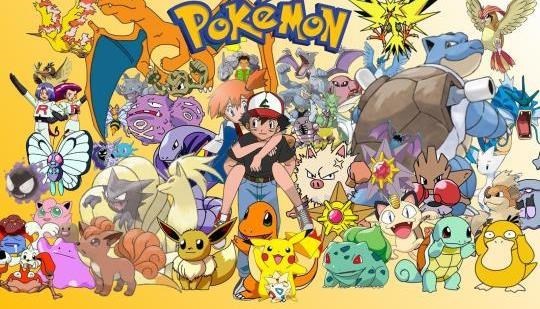
Image from https://n4g.com/news/1794471/top-5-original-pokemon
On Nov 27th 1996 came the release of Pokémon Red and Pokémon Green for the Nintendo GameBoy. Pokémon was a game in which players take the role of the protagonist number 721, they set out on adventures to collect and train creatures known as Pocket monsters - (hence the name Pokémon). With the ultimate aim of the game being to defeat 8 Pokémon gym leaders, stop and evil corporation and battle your way to becoming the best. But that what made it such a fun game, the end all aim for players was to collect all 151 Pokémon. However, not all Pokémon were in one place, you had to search for them across the growing world of Pokémon. The Game Boy allowed players to link cables and have battles against one another and trade Pokémon. This opened the door for even better adventures with your friends. The game become very popular, making millions in Japan. Causing the campany make re-releases limited edition Pokémon. The game didn’t get a world wide release until September 28th 1998, Pokémon Red and Blue, in America. And when it was released worldwide, it become a worldwide phenomenon, following were successful releases of Pokémon anime series, Manga, trading cards and games. The sequel, Pokémon 2: Gold and silver come out on the 21st 1999 in Japan and later in the US October 16th 2000. And has since had many other sequels.
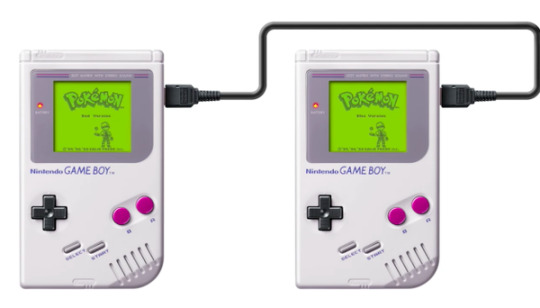
Image from http://www.escapistmagazine.com/articles/view/video-games/15434-Pokemon-20th-Anniversary-Tribute
Pokémon anime-
The first episode aired on 1 April 1997 in Japan, not being broadcasted in the US until September 1998. It was a success and has been running ever since. On season 1 episode 38 episode, ‘Electric Soldier Porygon’ viewers started to complain after an explosion on the episode. The explosion was extremely bright with intense lights flashing blue and red rapidly, it caused children to “experienced blurred vision. Others felt dizzy, or nauseous. In extreme cases, some even experienced seizures and cases of temporary blindness”(Plunkette, 2015) although it didn’t last very long. it had effects on a total of 700 viewers, who were rushed to the hospital. That episode has never been shown again. This incident holds the Guinness world record for Most Photosensitive Epileptic Seizures Caused by a TV Show. (Flint, 2015)

Image from https://www.gamnesia.com/news/limited-edition-pokemon-anime-box-sets-for-seasons-1-2-and-advance-series-c
Pokémon Go!
On July 6th, 2016 the mobile app game Pokémon Go was released, available for download on iOS and Android devices, and was an instant hit. Becoming the most revenue grossed by a mobile game in its first month with $206.5 Million. (Marasigan, 2016) . Players can create an avatar, who is then placed on a map according to the players geographical location. Players can then move around collecting Pokémon as their location has been transformed into the world of Pokémon, with places like ‘PokéStops’ and ‘Pokémon gyms’ which were now battle locations for players, this is all possible with the app’s AR feature. The players can see, and hear the Pokémon as they catch em’, bringing it to life, providing an experience like never before. Players can like feel like Ash when they play. That’s what made it so popular, it seemed like everyone was playing Pokémon Go, didn’t matter what age, background, or location, at the parks, gyms, or schools, “millions of people roaming around the physical world to capture virtual characters” (KnowledgeWharton high School, 2016). Pokémon Go was about the experience. Although, we had experienced AR in the form of snap chat/ Instagram fillers, this was the first time it was presented to us in this form. A big technology such as AR being so accessible, at any point we could take out our phones and transport to another world, another simulation but still within ours.
youtube
1 note
·
View note
Text
INMOOV|ROBOT LOVE - digging deeper
INTRODUCTION
In 2012, French sculptor and designer Gael Langevin started his project called ‘InMoove’. It started as a hand prothesis and, over time, developed into a human-size 3D-printed robot that is able to talk, see, move and hold onto something. It is now even possible to build your own version of this robot, since there is an open access to all information. The network shares the knowledge and innovation about the robot and its technology. Langevin believes that a huge benefit of this project being open-source is that it is enabled to have a wide reach and thereby goes through a larger development.
In 2015, a photographer Yethy proposed to do a photo session in Gael’s workshop with whatever moods and feelings the author of the artwork had. The photograph they made is the piece I want to apply digging deeper to and express my feelings towards it.
Unfortunately, I can't post the photograph because of Tumblr restrictions, however, it can be found here : http://inmoov.fr/gallery-v2/ (robot holding a baby)
What I find particularly appealing about this artwork is the contrast and the controversial meaning behind it. Baby skin in the photograph looks very soft, warm and sensitive, while robot ‘skin’ looks rather cold and harsh. Moreover, baby is sitting in a very natural way comparing to the robot, whose moves look dramatically artificial and have absolutely nothing to do with love and happiness that comes from a real person holding a baby. Also, the high contrast dissimulates the face of the baby, just like InMoov seem to come out from the darkness. Robot is not even looking at the baby, its face looks emotionless, and the baby himself/herself is turned away from robots’s face.
All these aspects that I have noticed might be pointing out the down-side of technological revolution. I strongly believe that soul and emotions are the things that separate us, human beings from animals, plants and machines. However, as can be seen through this artwork, there is no way robots can replace humans in these manifestations of humanity, because they are lacking the most important ingredients that I have aforementioned.
Even though the robot holding a baby might have been an attempt to convince that the future of technological revolution is alright and we can absolutely trust robots (since babies are really fragile and the one who’s holding it must be extremely trustful), I wouldn't agree with such statement. This photograph is giving me scary thoughts about our future: are humans going to be replaced with robots? Are robots going to raise children? If this robot is holding a baby, might he/she be baby’s parent? If yes, how does it feel like to be in a relationship with a machine? I do hope that we will never know.
Even though this piece gives me goosebumps, I find it very meaningful and successful, since it has literally brought my ideas about the frightening future to life and gave me some thoughts about the power of lighting, arrangement and photography itself. I feel that a strong quote added to this photograph would make the message even stronger, although, making a poster out of this work rather than a photograph.
3:1 KEY THEMES OF THE ARTWORK
Robot
Technology
Photography
Contrast
Relationship
3:2 WORD ASSOCIATION
Robot: artificial, emotionless, soulless, artificial intelligence, individuality, uniqueness, character, habits, attitude, person, human being, humanity, humanism.
Technology: progress, future, computer, robotic, mechanism, remote-controlled, programmed.
Photography: art, white balance, ISO, arrangement, lighting, background, model, message, hidden message, meaning.
Contrast: black and white, comparison, difference.
Relationship: love, trust, human, real, natural, fake, artificial, unreal, sci-fi, future, disaster, apocalypse.
3:3 RELATED ARTICLES:
‘Hi, Robot’ by Frieze
An article focusing on the second-wave effects of the ‘digital revolution’, or the capacities for automation, AI, and robotics to fundamentally shift the ways we work, speak, relate, love, criminalize and, yes, perhaps obliterate one another. It insists on asking yourself: so will the robots kill us all or will we do it ourselves? In an age of automation and robotics, how will we relate to one another? Do we need a new code of ethics? It also includes a review of the exhibition ‘Hello, Robot”, focused on ‘design’ as an interface between human and the machine. There is a small extract from the article that summaries my thoughts and gives a hope for a better future: ‘If our robots have developed, then our feelings for and against them largely haven’t: they still serve as playthings for us humans to live out our dreams, hatred and perhaps love.’
‘Artificial Amsterdam: The City As An Artwork’ by e-flux
An article about the exhibition, that depicts how the dynamic of cities is causing dramatic changes in society and culture worldwide. Cities are experiencing vast damage, economic, social and cultural shocks that they are not prepared to assume. Amsterdam is the opposite example of a city from disappearing into the waters. The term ‘artificial’ pops frequently when referring to Amsterdam. It does not only allude to the physical character of a city ‘stolen’ to the sea, but to a general feeling about the city’s life, culture, its submission to tourism, its paradoxical ruled liberality… a place where everything is under control, impost card city.
‘All Too Human Dinner” by TATE
This article does not aim to review any artworks, it is rather an announcement, informing that visitors go the ‘All Too Human’ exhibition will be able to have a dinner provided by Tate Britain afterwards. The relationship between the name of the exhibition and picture of food made me think of humanity and our natural habits regarding consuming food, which has become a ritual, even a cult nowadays. Is this food religion going to disappear along with the digital revolution?
3:4 WHAT I THINK ARTIST HAS RESEARCHED WHILE MAKING THIS WORK
Ironically, human body and its functions, in order to build a proper, human-looking robot. As for the photograph, I think he must have researched old renaissance paintings illustrating bright emotions and feelings, human relationship, in order to compare it to relationship between human and a machine. I feel that the famous icon of Virgin Mary holding baby Jesus was taken as an example for the arrangement and composition of the photograph. Comparing Virgin Mary and Jesus Christ to a robot holding a baby is extremely brave and provoking; a throwback to history of humanity and sneak-peak to the future where it might disappear. Obviously, an important aspect of the research must have been human feelings from the psychological point of view; how people are going to view the artwork and what kid of feelings towards it are going to appear, what this piece reminds of and how it can provoke the debate insight viewers’ mind.
HOW THE ARTWORK RELATES TO CURRENT NEWS
One of the most considerable and questionable inventions of our century is, undoubtedly, crypto currency, which arises questions similar to those that appear while thinking of digital revolution and robots: why was it created? How is it going to change our lives? Is it going to replace or destroy the existing system? Cryptocurrency, although being decentralised, is not gaining trust from the major percentage of population, just like artificial intelligence and robots. Nobody knows the true aim of making those aforementioned and how cryptocurrency and robots are going to change our lives. Even though crypto currency, such as Bitcoin or Ethereum, is made for human-use, it seems like someone is giving us a hint that soon we will only have digital currency for digital beings.
Since technological revolution is taking our world by storm, this artwork can relate to many current events in this field: the strikingly expressive android child’s face, developed on November 15, 2018 in Osaka University, flexible electronic skin for human-machine interactions, presented on November 28, 2018 by American Chemical society and many more. All these inventions are super promising and high-brow, yet so frightening and warning.
HOW THE ARTWORK RELATES TO HISTORY
The first historical event that pops in my head while looking at this artwork is the invention of the first computer. The first mechanical computer, created by Charles Babbage in 1822, doesn't really resemble what most would consider a computer today. Therefore, this document has been created with a listing of each of the computer firsts, starting with the Difference Engine and leading up to the computers we use today. The word "computer" was first recorded as being used in 1613 and originally was used to describe a human who performed calculations or computations. The definition of a computer remained the same until the end of the 19th century, when the industrial revolution gave rise to machines whose primary purpose was calculating.
I feel that this life-changing invention has started the thing we now call ‘digital revolution' in its worst sense, exposing peoples’ personal space into social media and replacing spiritual values with those non-existing digital ones.
RELATED ARTICLES
‘Hi, Robot’ by Frieze
An article focusing on the second-wave effects of the ‘digital revolution’, or the capacities for automation, AI, and robotics to fundamentally shift the ways we work, speak, relate, love, criminalize and, yes, perhaps obliterate one another. It insists on asking yourself: so will the robots kill us all or will we do it ourselves? In an age of automation and robotics, how will we relate to one another? Do we need a new code of ethics? It also includes a review of the exhibition ‘Hello, Robot”, focused on ‘design’ as an interface between human and the machine. There is a small extract from the article that summaries my thoughts and gives a hope for a better future: ‘If our robots have developed, then our feelings for and against them largely haven’t: they still serve as playthings for us humans to live out our dreams, hatred and perhaps love.’
‘Artificial Amsterdam: The City As An Artwork’ by e-flux
An article about the exhibition, that depicts how the dynamic of cities is causing dramatic changes in society and culture worldwide. Cities are experiencing vast damage, economic, social and cultural shocks that they are not prepared to assume. Amsterdam is the opposite example of a city from disappearing into the waters. The term ‘artificial’ pops frequently when referring to Amsterdam. It does not only allude to the physical character of a city ‘stolen’ to the sea, but to a general feeling about the city’s life, culture, its submission to tourism, its paradoxical ruled liberality… a place where everything is under control, impost card city.
‘All Too Human Dinner” by TATE
This article does not aim to review any artworks, it is rather an announcement, informing that visitors go the ‘All Too Human’ exhibition will be able to have a dinner provided by Tate Britain afterwards. The relationship between the name of the exhibition and picture of food made me think of humanity and our natural habits regarding consuming food, which has become a ritual, even a cult nowadays. Is this food religion going to disappear along with the digital revolution?
BOOKS IN THE LIBRARY
‘Is man a robot?’ by G.L.Simons, 1939
‘Becoming a robot’ by Narn June Paik, 2014
‘A guide to digital revolution’ by PACS, 2006
‘How machines think: a general introduction to artificial intelligence’ by Nigel Ford, 1987
‘Artificial Intelligence’ by Patrick Henry Winston, 1992
3:5 SUMMARY
In conclusion, referring to the expanded research and applying it to the original artwork, it becomes obvious that digital revolution is both a great invention and a huge issue of our age. As anything else, it has both benefits and drawbacks, however, looking back at the original artwork, it seems that those down-sides outweigh the pluses of robots and digitalising process. The more digital creations are being developed, the more humanity is dying. InMoove is a very successful piece that illustrates frustrating and frightening future, a future without kindness, love, individuality and, unfortunately, humanity.
This expanded research gave me an astonishing abundance of thoughts regarding digital revolution and my own artworks. I might relate my art to my apocalyptic view of the future, expanded and developed by this research.
I would like end by summarising the moral of this research through Erich Fromm’s quote: ‘he danger of the past was that men became slaves. The danger of the future is that men may become robots.’
0 notes
Text
Performance Culture
I listened to both podcasts before I read the article about performance and the involvement that technology has on it. The first podcast, The Realities of virtual reality, talked was mainly about the speaker trying out virtual reality. Specifically, a game called “Deep” which is mainly controlled by a belt attached to you that can read your breathing, so when you inhale you move upwards and when you exhale it give you the illusion that you float (or stay in the same position). The game, according to the speaker of Note to self, is soothing and but can cause dizziness as well as distortion of objects as soon as you remove the gadgets. While the game is currently being tested to be used in teens with anger issues along with a possibility of using by women when giving birth. This type of virtual reality, in my opinion, can create positivity and engagement. Not only is it fun and engaging but like the podcast mentioned, it can also bring positivity to young teens, for example, with anger issues.
The second podcast, Forget Edibles: getting high on wearables speaks about a different and new way to “get high” or give you the sensation that you are. Thynk is a company that develops a gadget that claim will change your brain. The gadget attaches to your head and it communicates to an application. You (the user) is in control through the application; therefore, you can tell the gadget how much is too much and when to stop. There is a downside to this gadget, claiming that there are after effects that that makes your brain think that it is still high. The company, Thynk, says “it is like a shift, from one place to another.” Meanwhile the speaker declared that it did give her a new “high” and that it gave her a “no fucks attitude.” In my opinion, this type of gadget can be positive if used responsibly. While the podcast did not mention any dangers, I think it would be important to research any dangers to this new high. Drugs are put in the body in different ways from smoking, injection, inhaling, or consumption and have shown that it can destroy or damage organs in one way of another. The gadget by Thynk co. did not mention any dangers or if there are dangers to addiction.
Last, the article Entangles: Tech and the Transformation of Performance by Chris Salter examines the role that technology holds in performance. With new technologies arising, it has created aesthetic experiences and thus brings into question how we can confuse artistic performance with performance by machines in terms of function, efficiency and expression. But most modern performances use some sort of technology whether it be with sound, lighting, or set. In my opinion, we must start to think of tech performances as media technology and the article mentions this too. Media technology instead of stealing performances, I think it enhances a viewer’s experience. For example, 3D technology in movies allows us to be part of scenes, if we consider movies to be a type of performance.
Software like deep help ease a person’s mind and thus can help calm people in any given situation like when a woman is giving birth, as mentioned by Note to self. While the gadget by Thynk can help with how drugs are handled. Both shows us that technology is becoming more interactive and is making us be a part of it. These technological gadgets is giving us pleasure in some way or another and in completely different ways but for one common goal: human pleasure. Media technology is accomplishing the same idea of human pleasure by enhancing human performance.
0 notes